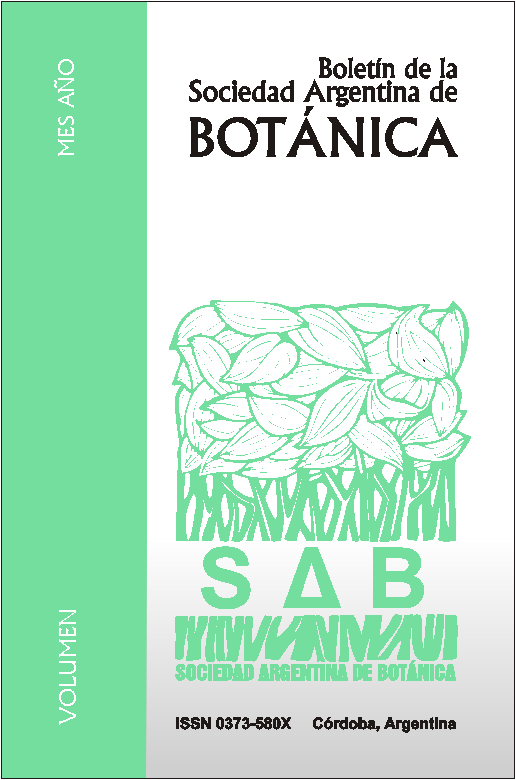Novelties and taxonomical notes in Senecio from Patagonia, Argentina
DOI:
https://doi.org/10.31055/1851.2372.v49.n3.9472Keywords:
Argentina, Asteraceae, Senecio.Abstract
Novelties and taxonomical notes in Senecio from Patagonia, Argentina. A new species and three new varieties of the genus Senecio L. sect. Senecio, are described. The new species, S. pichineuquensis Tortosa & Adr. Bartoli, included in the series Xerosenecio (Cabrera) Cabrera & S. E. Freire, has a geographic distribution in the south of Mendoza and north of Neuquén Provinces. It is characterized by ligneous rigid stems with long internodes, linear, rigid leaves, few-flowered discoid yellow heads grouped in dense corymbs, and narrowly cylindrical involucre. A key is provided for its differentiation from the allied species. A variety of this species with cream-color heads, S. pichineuquensis var.albus Tortosa & Adr. Bartoli, is described. The other two new varieties, S. bracteolatus Hook. et Arn. var. luteousTortosa & Adr. Bartoli and S. varvarcensis Cabrera var.pinnatus Tortosa & Adr. Bartoli, belong also to the seriesXerosenecio, and are apparently endemic to the north of Neuquén Province. The variety luteous of S. bracteolatusdiffers from the typical variety by its gold yellow florets, higher narrowly cylindrical involucre, and lower number of phyllaries and flowers, whereas the variety pinnatus of S. varvarcensis may be distinguished from the typical variety by its pinnate leaves (vs. entire leaves in var.varvarcensis). Two other species of Senecio that inhabit in Patagonia are included in the synonymy of different species: S. subdiscoideus Sch. Bip. ex Wedd. of the seriesMetazanthi (Meyen) Cabrera et S. E. Freire, as synonym ofS. kingii Hook. f., and S. bipontinii Wedd. of the seriesChilenses DC. ex M. G. López, A. F. Wulff & Xifreda subseries Caespitosi (O. Hoffm.) Cabrera et S. E. Freire as synonym of S. crithmoides Hook. et Arn. S. crithmoides, S. iberidifolius Phil., and S. purpuratus Phil. are lectotipified.Downloads
Issue
Section
License
Provides immediate and free OPEN ACCESS to its content under the principle of making research freely available to the public, which fosters a greater exchange of global knowledge, allowing authors to maintain their copyright without restrictions.
Material published in Bol. Soc. Argent. Bot. is distributed under a Creative Commons Attribution-NonCommercial-ShareAlike 4.0 International license.





